A brief history of the long, rocky relationship between the United States and Cuba, from the Spanish-American War through the recent reestablishment of diplomatic relations, as told in pictures.
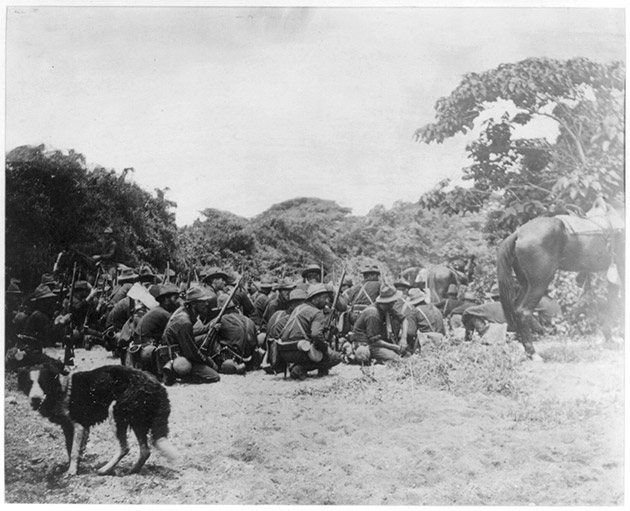
Teddy Roosevelt made a name for himself when his Rough Riders charged San Juan Hill during the Spanish-American War. Above, the Sixth Infantry under Spanish fire from San Juan Hill in July 1898. William Dinwiddie/Library of Congress
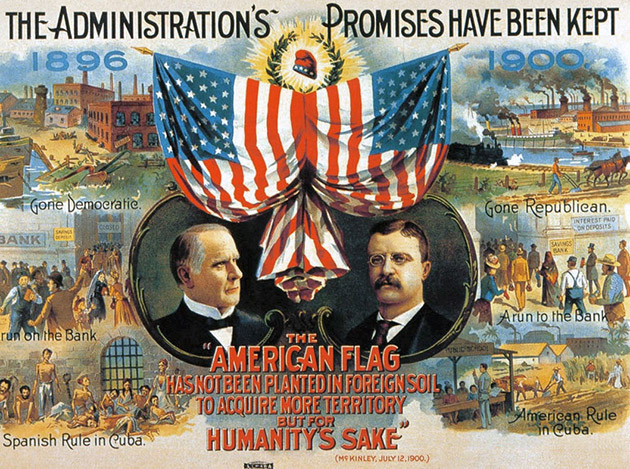
At the end of 1898, Spain and the United States signed the Treaty of Paris, marking the end of the Spanish-American War. This 1900 campaign poster for the Republican Party trumpets the benefits of “American rule in Cuba.” Wikimedia

Students outside the University of Havana with their rifles in September 1933. President Garado Machado was overthrown in a coup in 1933. AP
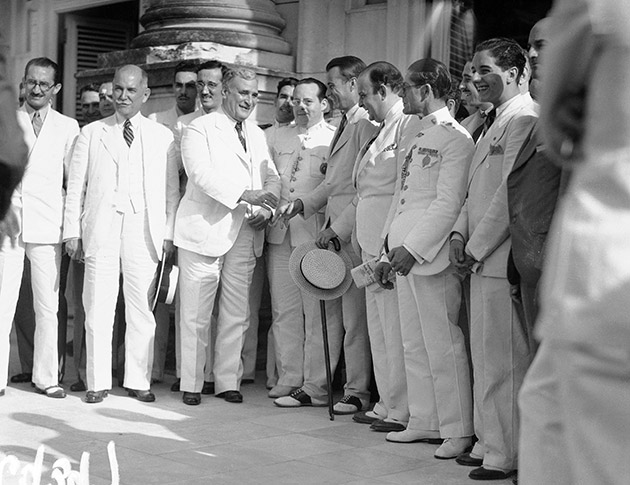
In May 1934, Cuban President Carlos Mendieta (third from left) exchanges greetings with the US ambassador in Havana after the signing of the Cuban-American Treaty, which secured American rights to Guantanamo Bay. AP
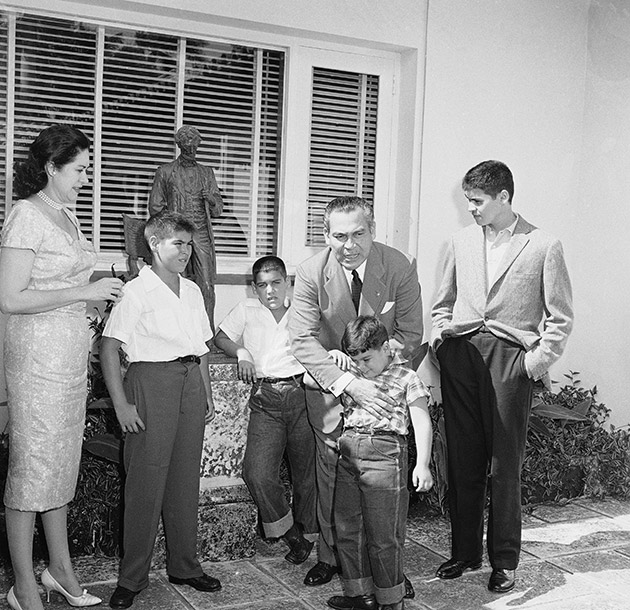
Cuban President Fulgencio Batista with his family. Batista was elected in 1940, kicking off a period of close cooperation between Cuba and the United States. He left office in 1944, and in 1952 he launched a successful military coup. Harold Valentine/AP
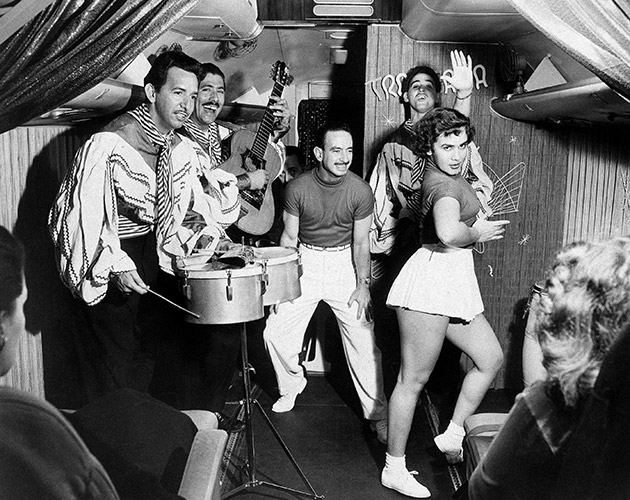
With Batista back in power, Cuba became a party destination for Americans. Above, a troupe from the Tropicana Night Club entertains passengers on a Miami-Havana flight in 1953. AP
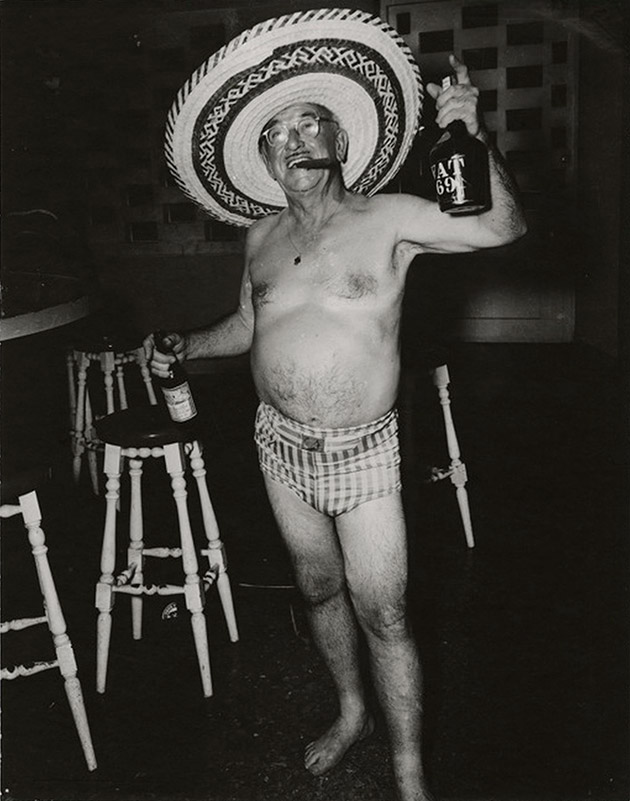
An American tourist in ’50s Havana Constantino Arias/Wikimedia
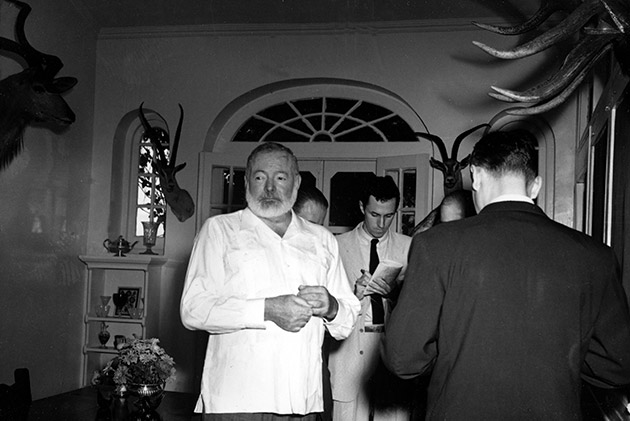
Ernest Hemingway at his home in San Francisco de Paula, Cuba, after being awarded the 1954 Nobel Prize in literature. The author said he “broke the training” and took a drink to celebrate. AP
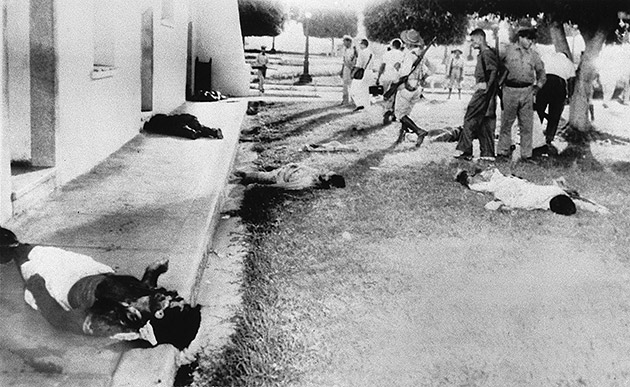
In July 1953, a group of revolutionaries led by a young lawyer named Fidel Castro attacked the Moncada military barracks in Santiago de Cuba. The attack failed and Castro was imprisoned until 1955. AP
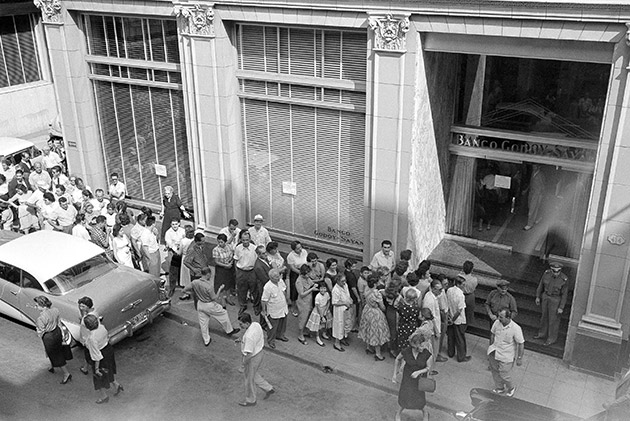
After fleeing to Mexico, Castro and his fellow insurgents returned to Cuba in 1956 to continue their civil war against Batista. Above, Cubans wait to withdraw money from a bank in April 1958. AP
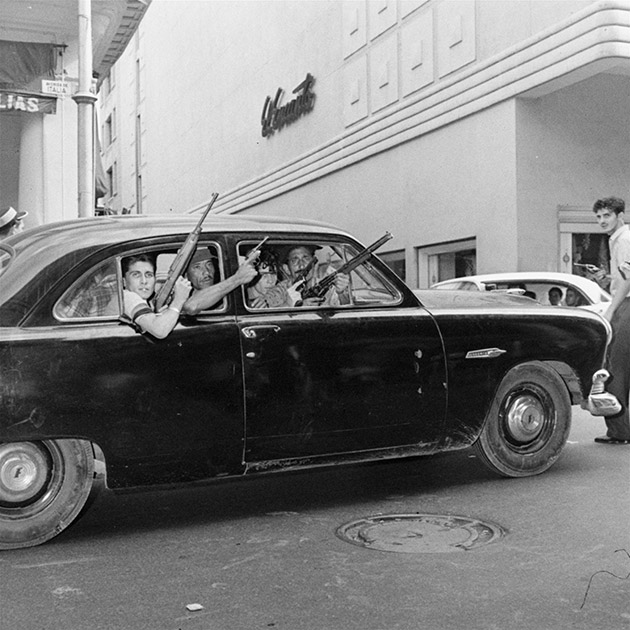
Young rebels cruise Havana’s streets in January 1959 AP
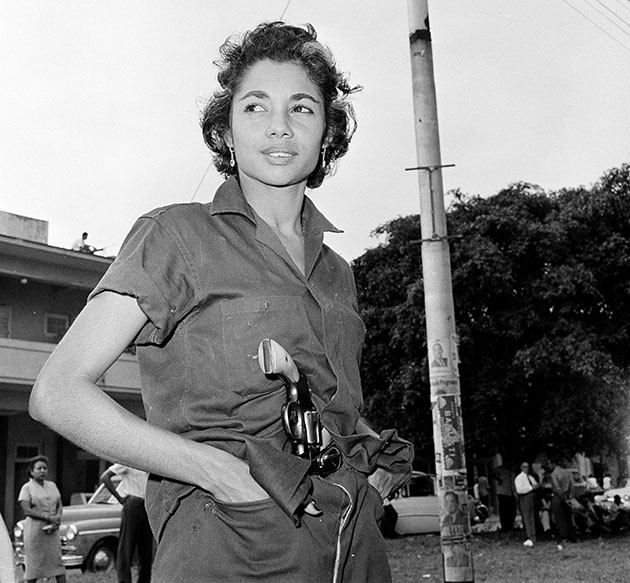
A young woman patrolling Havana in January 1959. After leading a guerilla campaign in the Sierra Madre mountains, Castro’s forces defeated the government forces and Batista fled the country. AP
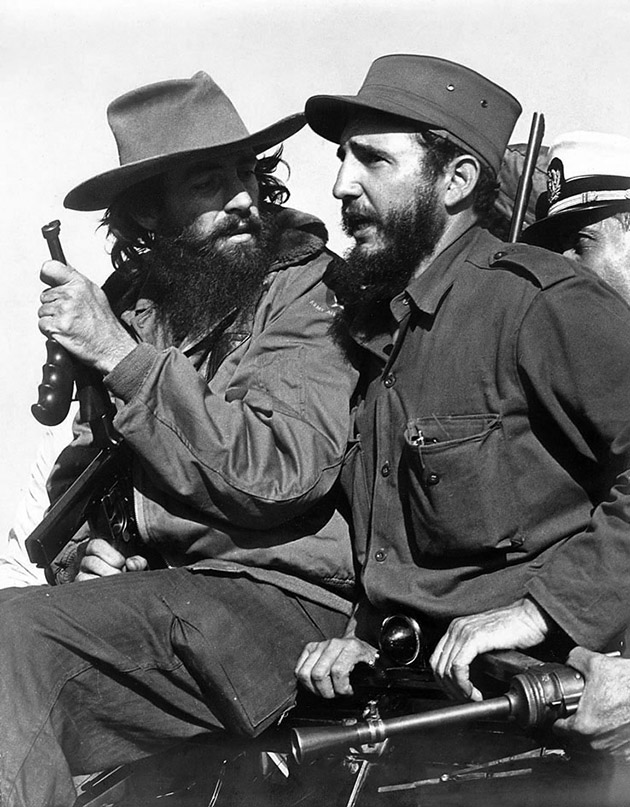
Fidel Castro (right) entered Havana with fellow revolutionary Camilo Cienfuegos on January 8, 1959. Wikimedia
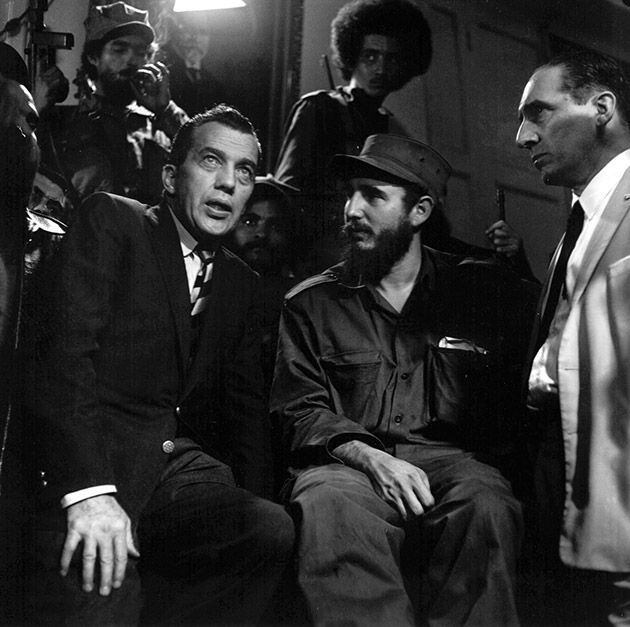
Shortly after assuming power, Castro visited the United States, Canada, and a number of Central and South American countries. Above, Castro talks with Ed Sullivan. Harold Valentine/AP
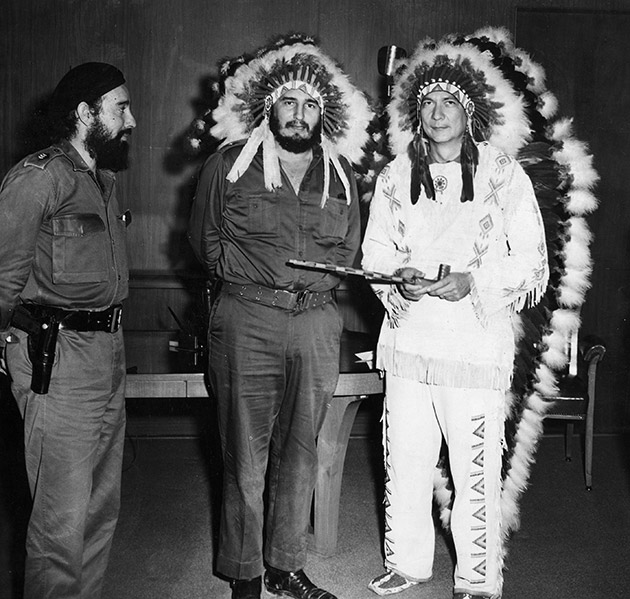
Castro and W.A. Reiford, a Creek missionary from Oklahoma who came to Havana to open an orphanage in 1959. AP
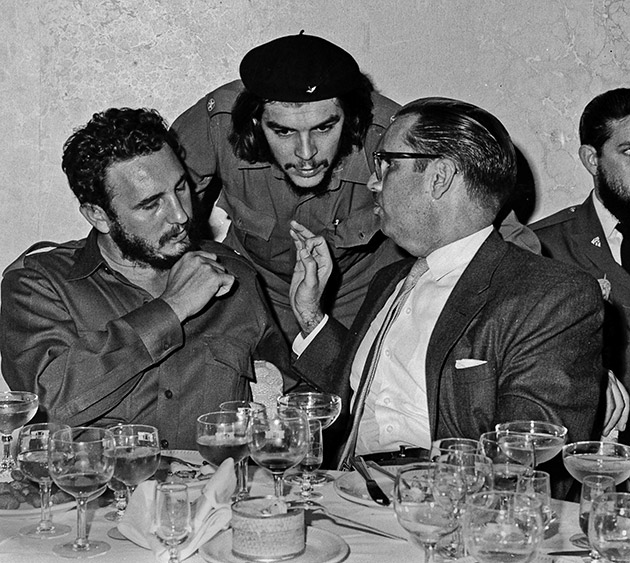
Cuban revolutionary hero Ernesto “Che” Guevara (center) confers with Castro and Cuban President Osvaldo Dorticos in 1960. Prensa Latina/AP
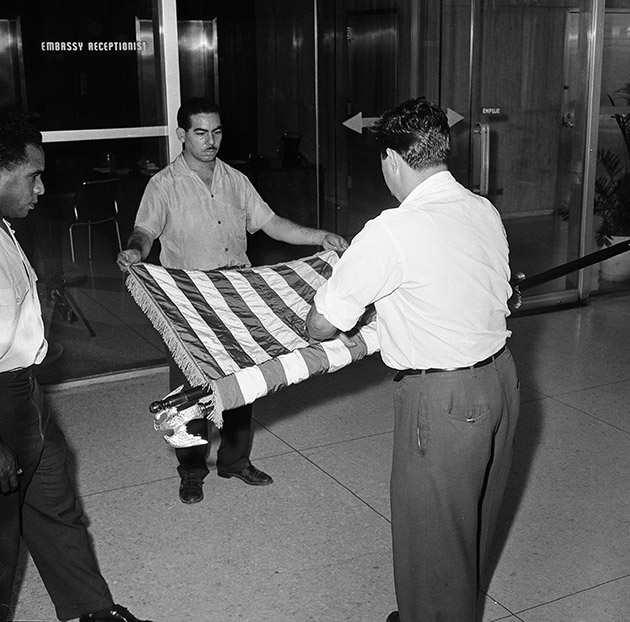
In 1960, the United States enacted a trade embargo on Cuba. The following year, it closed its Cuban embassy, formerly ending diplomatic relations between the two countries. Above, an American flag is rolled up as the US embassy in Havana prepares to close. AP
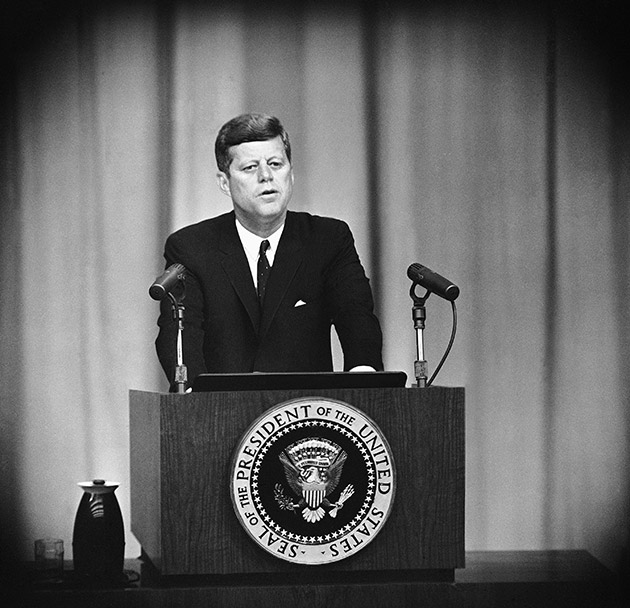
President John F. Kennedy declares the United States will be “alert and fully capable” of dealing with any threat from Soviet-backed Cuba, on September 13, 1962. A month later, the 13-day Cuban Missile Crisis would bring the United States, Cuba, and the Soviet Union to the brink of war. AP
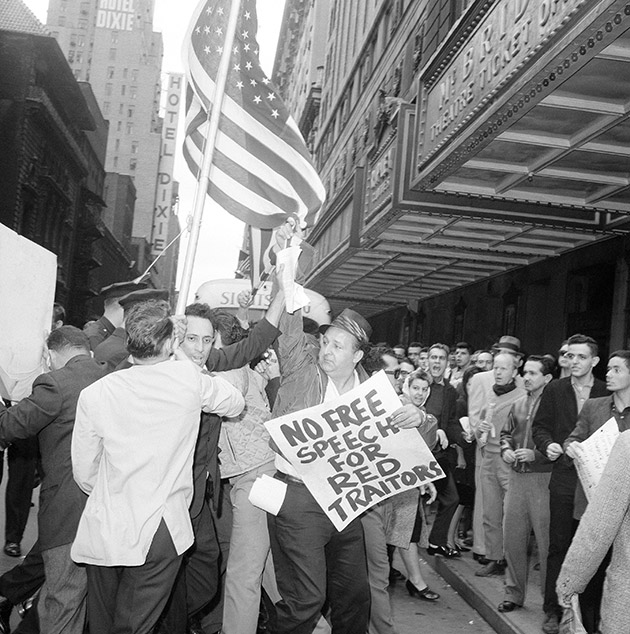
Police disperse anti-Castro demonstrators in New York City in September 1963. AP
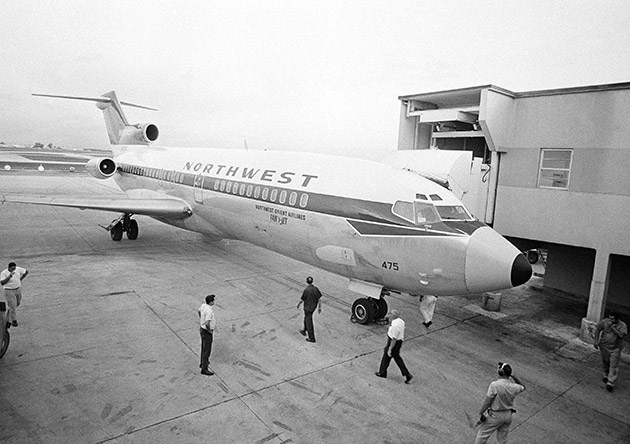
Hijackings between the United States and Cuba spiked in the late 1960s and ’70s. Above, a passenger plane that was hijacked to Cuba in July 1968 returns to Miami with only the crew aboard. AP
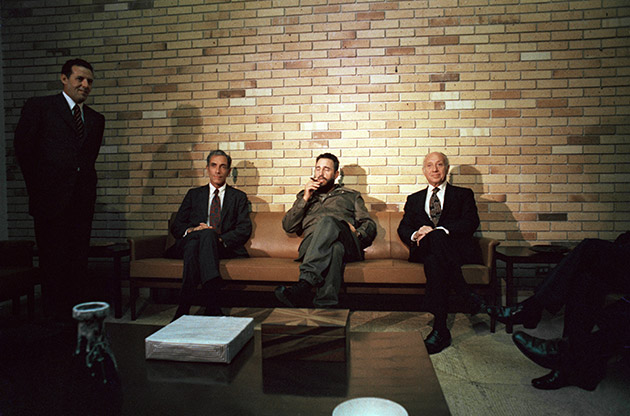
The hijackings prompted some politicians to try to reopen communications between the two countries. Above, Senators Jacob Javits and Claiborne Pell visit Castro in Havana in September 1974. Charles Tasnadi/AP
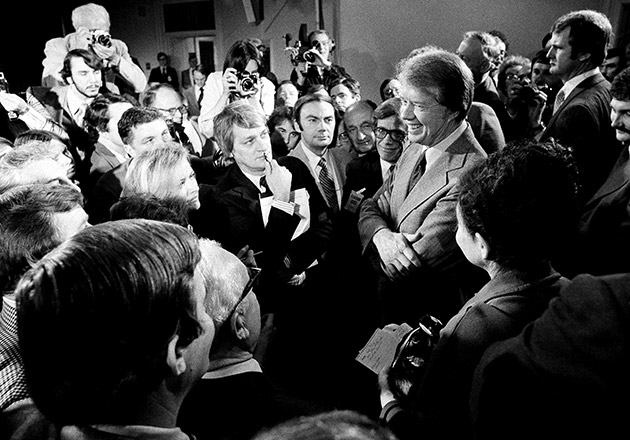
President Jimmy Carter is surrounded by reporters in March 1977 after announcing that his administration would lift a travel ban to Cuba. The same year, the United States and Cuba opened “interest sections” to facilitate communication. AP
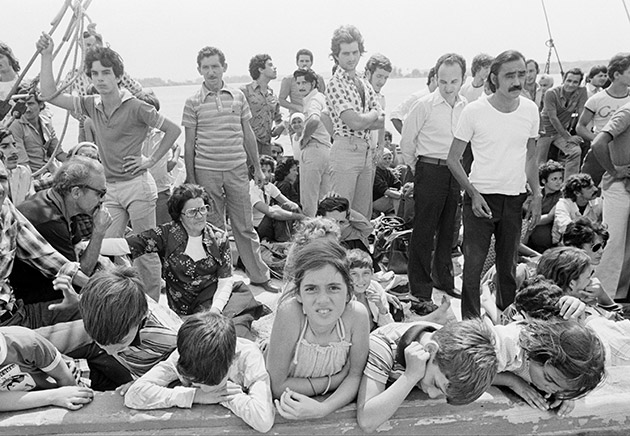
Refugees headed for Florida wait aboard a boat at the port of Mariel, Cuba, in April 1980. During what became known as the Mariel boatlift, 125,000 Cubans left the country. Jacques Langevin/AP
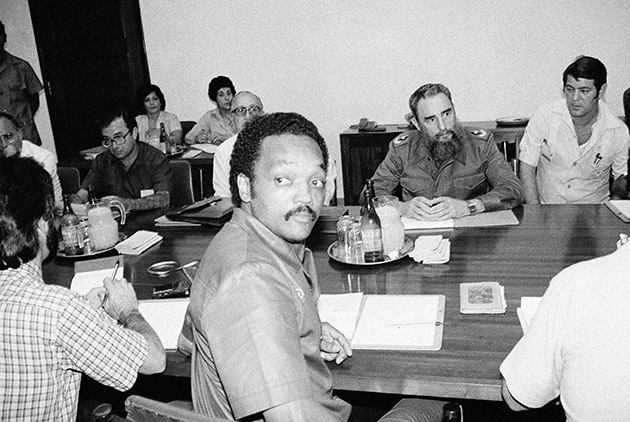
The Rev. Jesse Jackson meets with Castro and other Cuban officials in Havana in June 1984. J.Scott Applewhite/AP
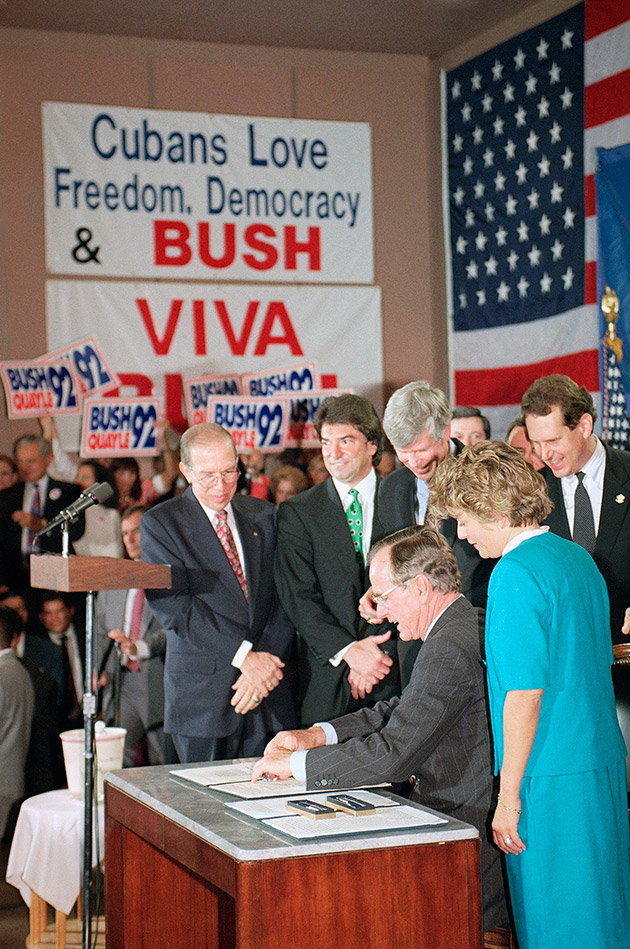
US-Cuban relations cooled under Presidents Reagan and Bush. In October 1992, President George H. Bush signed legislation tightening the embargo on Cuba. The president said the bill would “speed the inevitable demise of the Cuban Castro dictatorship.” Ron Edmonds/AP
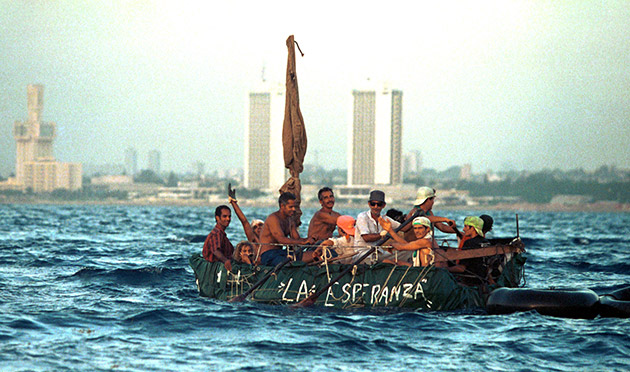
In August 1994, Castro suggested that any Cubans who wanted to leave were free to do so. More than 30,000 people sailed away on makeshift rafts while authorities stood by. Jose Goitia/AP
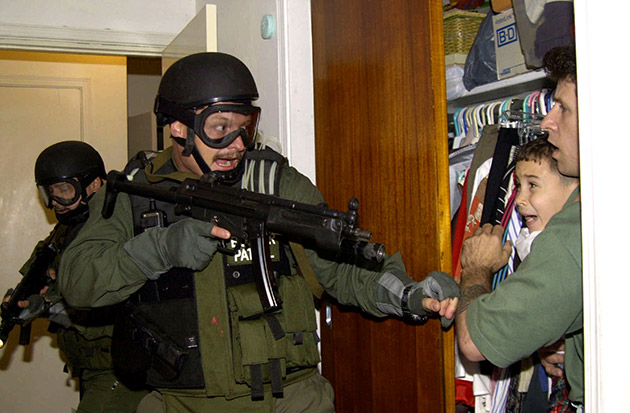
Elián González was rescued at sea while his mother attempted to bring him to the United States in 1999. The Clinton administration ordered that Elián be returned to his father, sending border patrol agents to remove him from his relatives’ house in Miami. In 2013, Elián described his time in the United States as “a very sad time for me.” Alan Diaz/AP
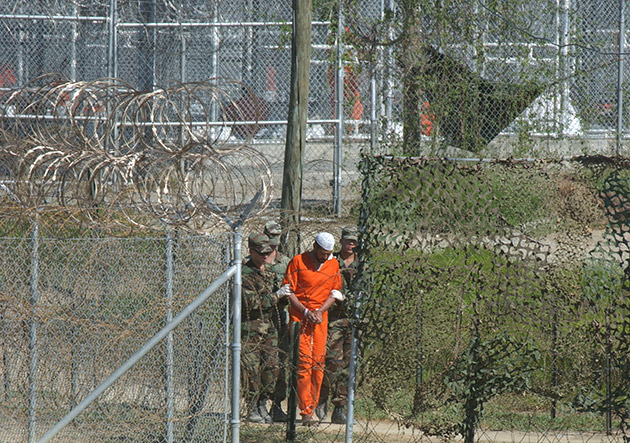
Following the September 11 attacks and the beginning of the war in Afghanistan, a detention camp for “enemy combatants” was established at the US naval base at Guantanamo Bay. Above, military guards take a Guantanamo detainee to an interrogation in March 2002. Andres Leighton/AP
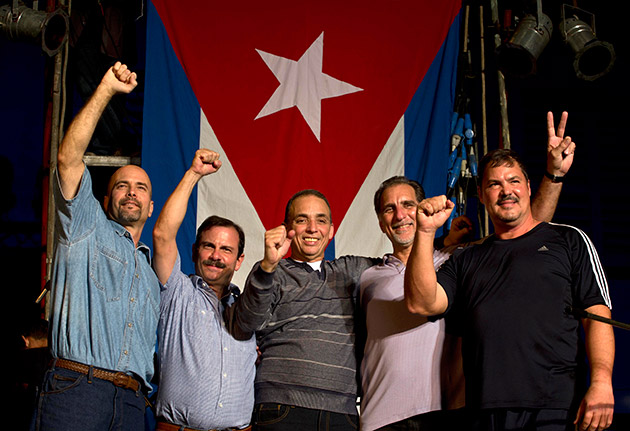
As part of the December 2014 agreement to normalize relations between the United States and Cuba, the administration approved a quiet exchange of prisoners, including the three remaining members of the “Cuban Five.” Above, the Cuban Five (from left), including Gerardo Hernandez, Fernando Gonzalez, Antonio Guerrero, Rene Gonzalez, and Ramon Labanino, wave after a concert in Havana on December 20, 2014. Ramon Espinosa/AP
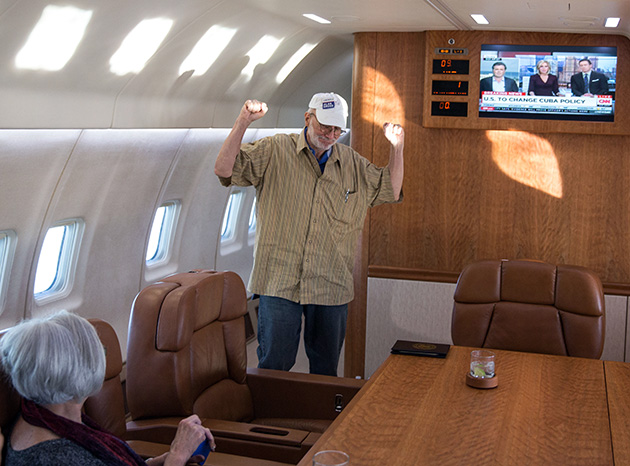
As part of the deal, Cuba released Alan Gross, an American aid worker who had been imprisoned since 2009. Above, Gross flies back to the United States with his wife on December 17, 2014. On July 20, 2015, the United States reopened its embassy in Cuba. Lawrence Jackson/White House



























































